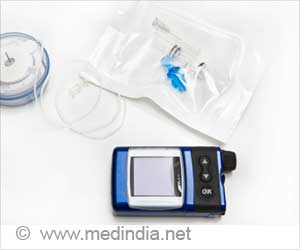A particular type of lipid or fat present in eyes may play a key role in deterring the eye disease diabetic retinopathy, revealed researchers.

The findings, published in the journal Diabetes, noted that the blood vessels in the retina are closely connected by structures called tight junctions, which are part of the blood-retinal barrier -- a virtually impenetrable wall.
Diabetes can expose blood vessels to high levels of glucose and unhealthy amounts of lipids, which throws off the balance of nutrients that are transported throughout the body.
"When this becomes unbalanced, the vessels leak and become fragile, leading to the development of diabetic retinopathy," Busik added.
"It appears though that these long-chain lipids and the enzymes that produce them can protect the retina and its blood vessels," he added.
Next steps for the researchers are to understand what these lipids can really do and how exactly they're situated in the tight junctions of the retina so that new treatments may be possible.
Advertisement
Lipids often get a bad rap due to their association with health issues such as high cholesterol and heart disease, but Busik is encouraged by what she has found.
Advertisement















